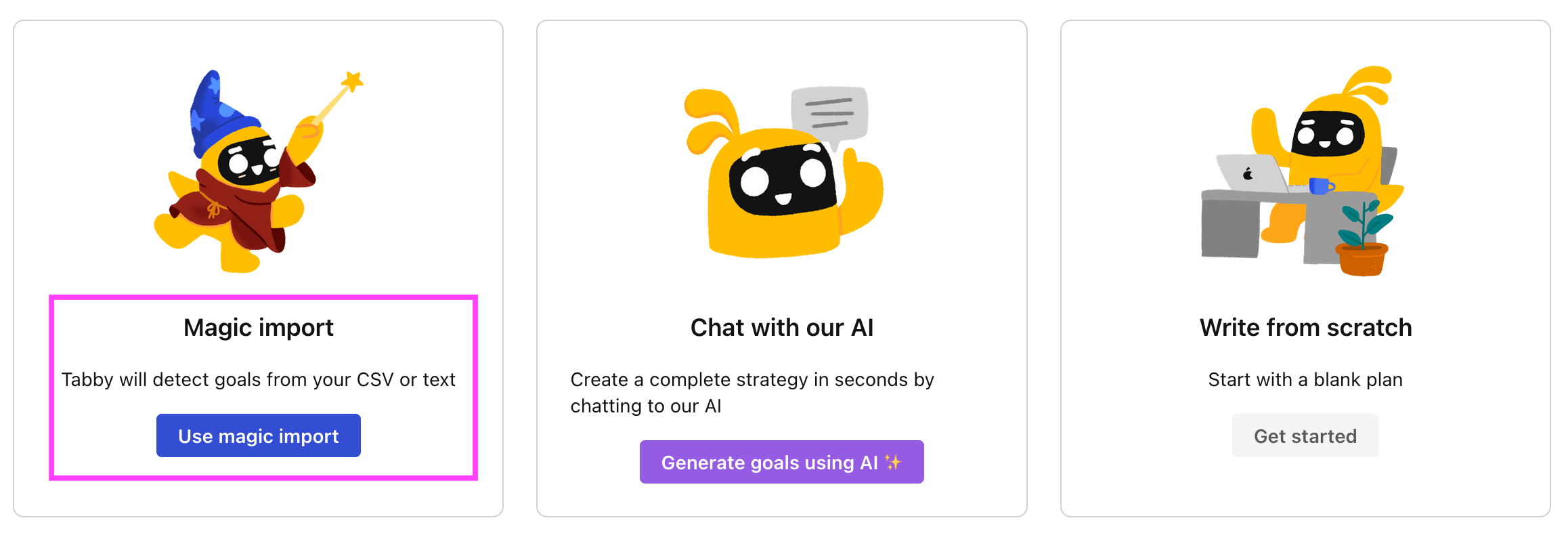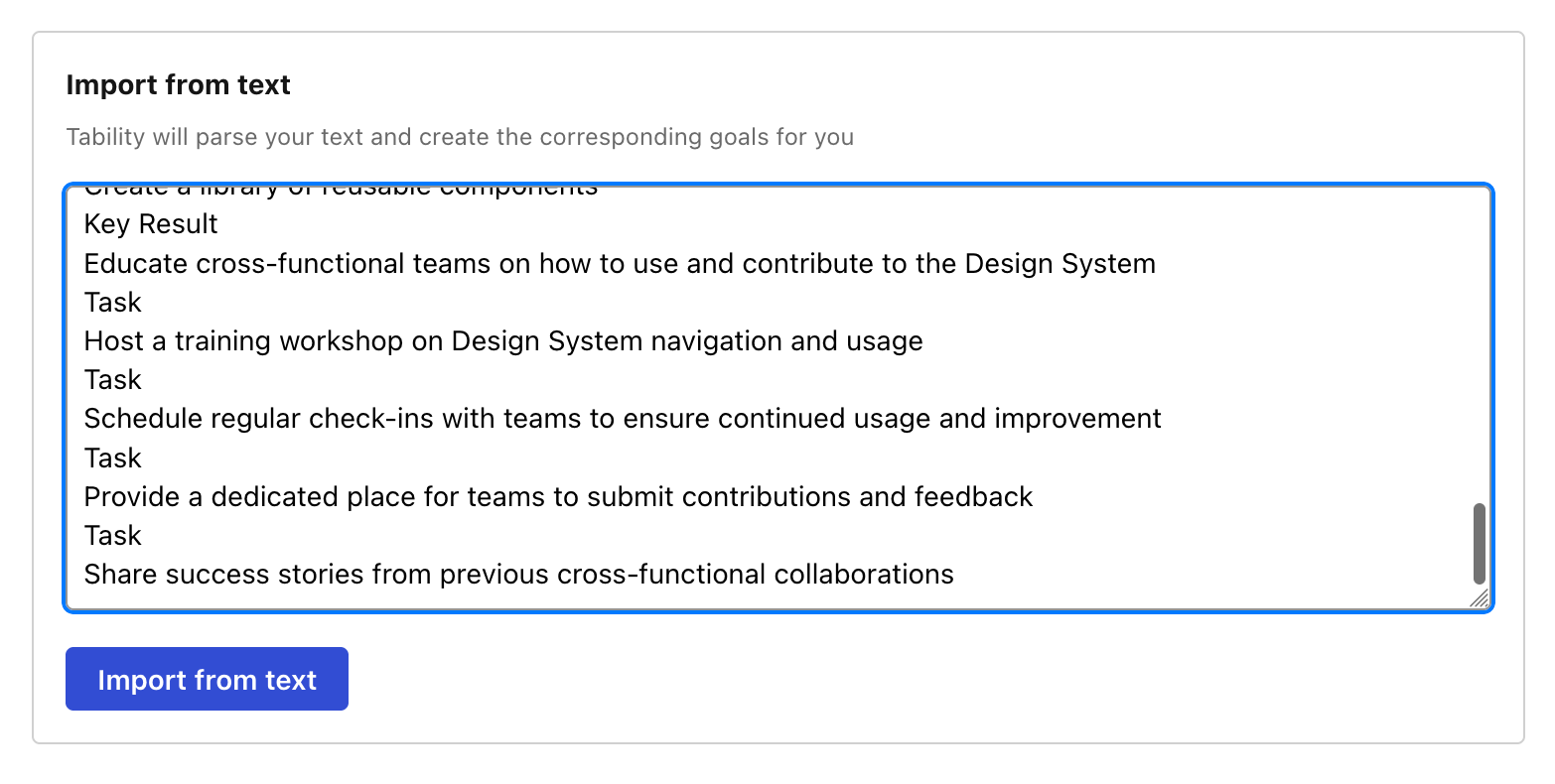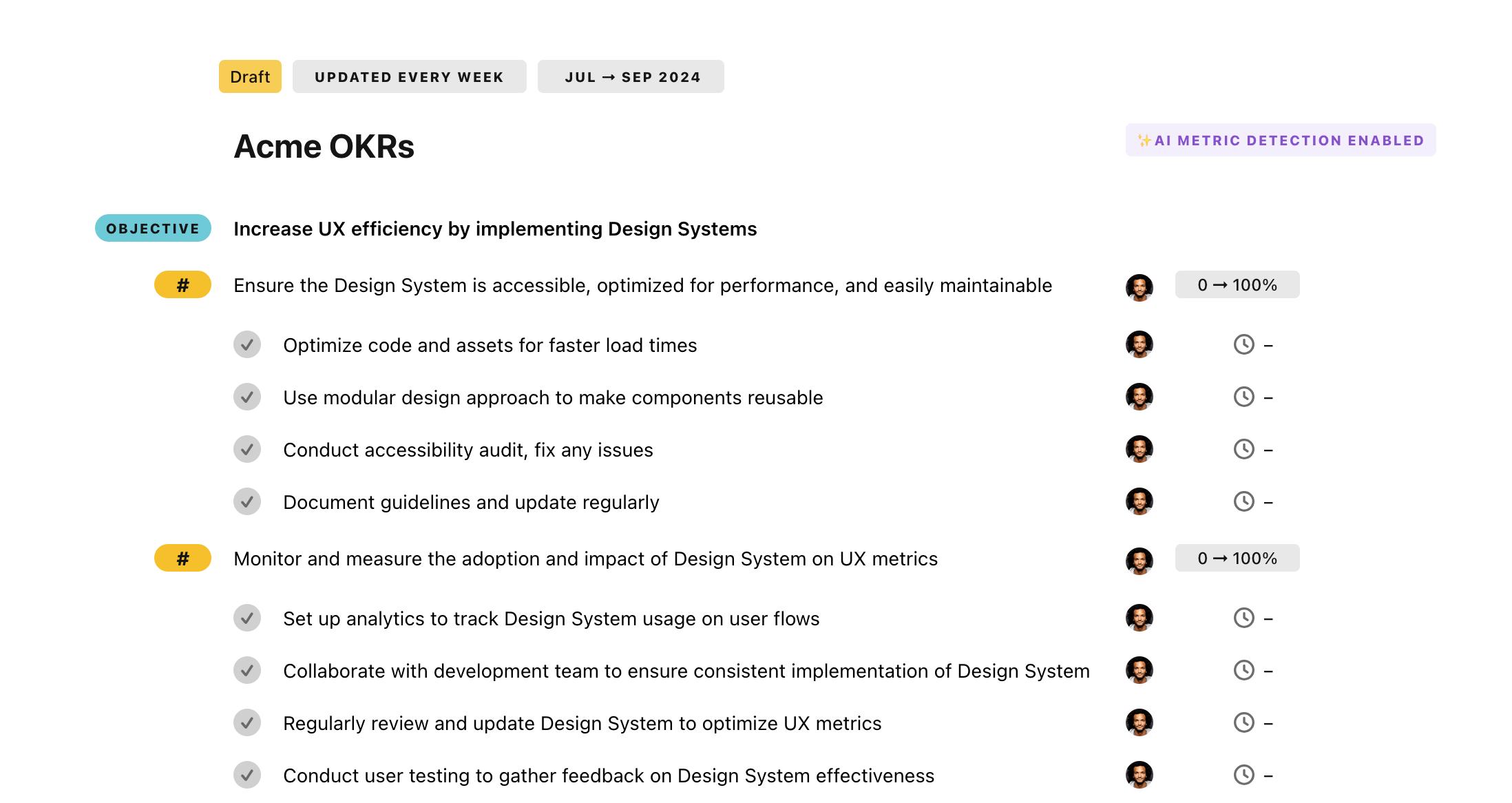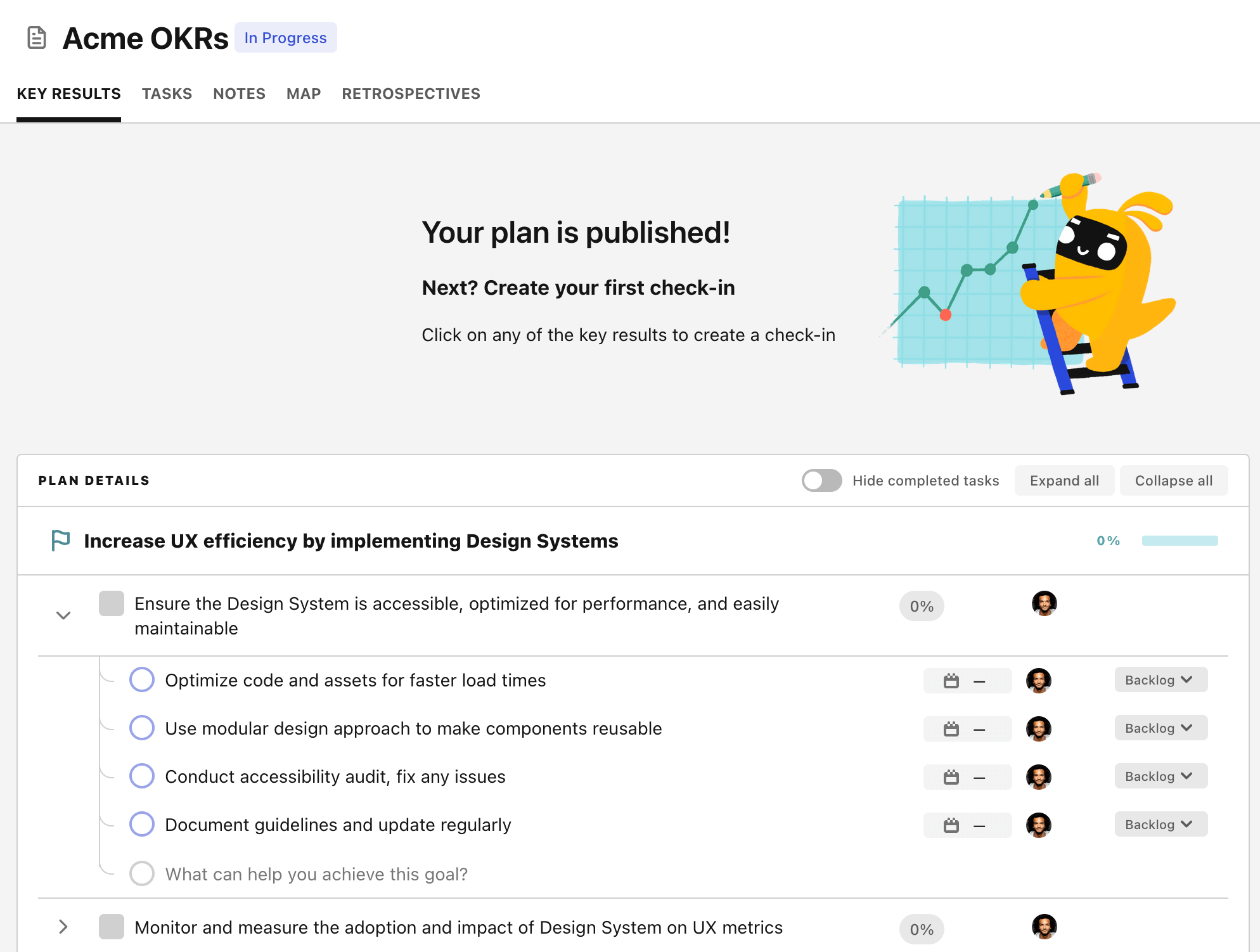OKR template to to optimize and expand the functionality of the Glean integration app
Your OKR template
Next, an outcome is to aim for a user satisfaction score of 85% on the improved integration features. Regular user training sessions will be held, adjustments will be prioritized based on user feedback, and continuous user feedback collection and analysis will be established.
An additional outcome is to boost the application's performance. The goal is to achieve 95% uptime across all integrated platforms by employing initiatives like systematic maintenance of all integrated platforms, conducting rigorous stress tests for reliability, and optimizing application codebase for enhanced performance.
A primary focus is on expanding integrations and improving user satisfaction rates along with application performance. Efforts will be poured into developing marketing strategies, enhancing API functionalities, conducting trainings and webinars, whilst continuously receiving and analyzing user feedback.
ObjectiveTo optimize and expand the functionality of the Glean integration app
KRIncrease the number of Glean app integrations by 20%
Develop a strategic marketing plan targeting potential integration partners
Improve API functionalities to ease integration processes
Conduct webinars showcasing benefits and features of Glean integrations
KRAchieve a user satisfaction score of 85% on improved integration features
Conduct regular training sessions for users
Prioritize adjustments based on user feedback
Implement continuous user feedback collection and analysis
KRImprove app performance to achieve 95% uptime across all integrated platforms
Implement regular system maintenance across all integrated platforms
Develop and apply rigorous stress tests to ensure reliability
Conduct regular optimization of application codebase for enhanced performance
How to edit and track OKRs with Tability
You'll probably want to edit the examples in this post, and Tability is the perfect tool for it.
Tability is an AI-powered platform that helps teams set better goals, monitor execution, and get help to achieve their objectives faster.
With Tability you can:
- Use AI to draft a complete set of OKRs in seconds
- Connect your OKRs and team goals to your project
- Automate reporting with integrations and built-in dashboard
Instead of having to copy the content of the OKR examples in a doc or spreadsheet, you can use Tability’s magic importer to start using any of the examples in this page.
The import process can be done in seconds, allowing you to edit OKRs directly in a platform that knows how to manage and track goals.
Step 1. Sign up for a free Tability account
Go tohttps://tability.app/signup and create your account (it's free!)
Step 2. Create a plan
Follow the steps after your onboarding to create your first plan, you should get to a page that looks like the picture below.

Step 3. Use the magic importer
Click on Use magic import to open up the Magic Import modal.
Now, go back to the OKR examples, and click on Copy on the example that you’d like to use.

Paste the content in the text import section. Don’t worry about the formatting, Tability’s AI will be able to parse it!

Now, just click on Import from text and let the magic happen.

Once your example is in the plan editor, you will be able to:
- Edit the objectives, key results, and tasks
- Click on the target 0 → 100% to set better target
- Use the tips and the AI to refine your goals
Step 4. Publish your plan
Once you’re done editing, you can publish your plan to switch to the goal-tracking mode.

From there you will have access to all the features that will help you and your team save hours with OKR reporting.
- 10+ built-in dashboards to visualise progress on your goals
- Weekly reminders, data connectors, and smart notifications
- 9 views to map OKRs to strategic projects
- Strategy map to align teams at scale